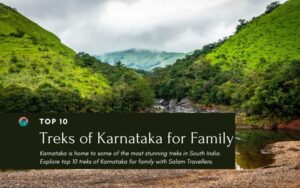
The Brammah Valley Trek is an exhilarating trek located in the Pir Panjal range in the Kashmir region of India. With its lush green meadows, gushing streams, and snow-capped mountains, the Brammah Valley Trek is considered one of the most beautiful treks in India.
The Brammah Valley trek starts from the picturesque hill station of Pahalgam and takes you through pine forests, alpine meadows, moraines, and glaciers, before culminating at the Brammah Glacier. The trek is moderately difficult, with the highest point being around 4,200 meters above sea level. The best time to do this trek is during the summer months between June to September when the weather is pleasant.
Brammah Valley Trek Route
The Brammah Valley trek route takes you through some of the most beautiful and remote areas of the Kashmir valley. The trek starts from the village of Aru, which is around 2 hours drive from Pahalgam.
From Aru, the trail gradually ascends through pine forests alongside the Aru River, leading to the first campsite of Lidderwat. The jungle trail continues till we reach our campsite for the day, which is a small clearing with a stream of fresh water flowing nearby. This offers stunning views of the Lidder Valley and the Kolahoi glacier.
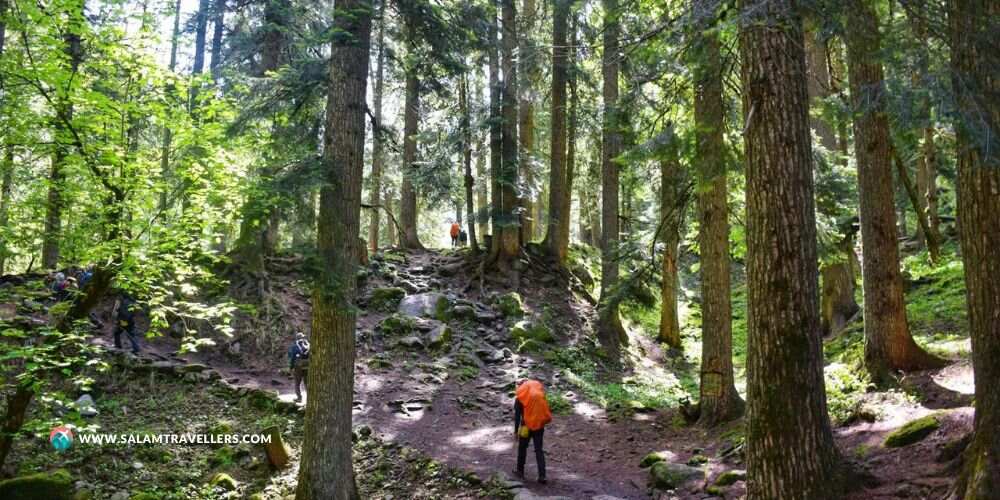
After crossing the pass, the trail descends to the meadows of Vishansar and Kishansar lakes. This area is known for its beautiful alpine lakes and wildflowers during summer. The next campsite is at Brammah, a scenic grassy meadow with the Brammah glacier feeding into it.
The final day is an easy walk to the Brammah Valley viewpoint, which offers a panoramic vista of the entire valley and mountains including Mt Kolahoi. From here, you trace back the same route to Aru to complete the trek.
Also Read: Gurez Valley Trek in Kashmir
Brammah Valley Trek Difficulty Level
The Brammah Valley trek has a moderate difficulty level. Some key points about the trek difficulty:
- Physical Fitness Required – You need an average level of fitness to complete this trek. While previous hiking experience is not compulsory, being able to walk 5-6 hours daily with your backpack is recommended preparation. Work on your cardio to build stamina before the trek.
- Terrain – The trail has a mix of ascents, gradual climbs, and some steep sections. The path is mostly well-defined trails but there are a few unpaved sections. The last day has snowfields to cross so be prepared.
- Altitude – The maximum altitude reached is 4,200 m. Proper acclimatization to the increasing elevation is important to avoid altitude sickness.
- Distance Covered Per Day – On average you will trek anywhere from 8 to 15 km per day depending on the terrain. Some days are short with only 3-4 hours of trekking. While other days have longer 7-8 hour treks.
Also Read: Bodpathri Meadows and the Doodhpathri Trek in Kashmir
What is the best time to visit the Brammah Valley?
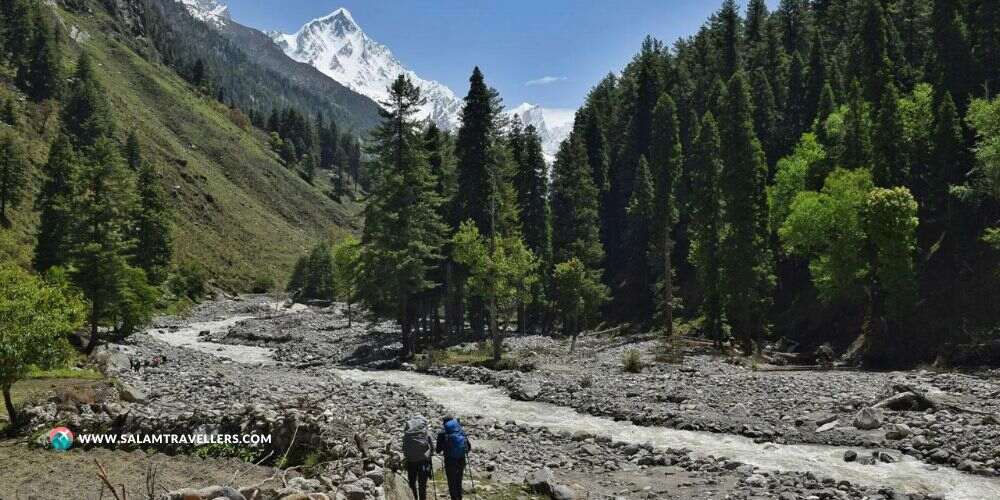
The Brammah Valley Trek can be done throughout the year, however, the ideal time is from April to November when the weather is pleasant.
- April to June – This is the spring season in Kashmir with blooming flowers and meadows. Days are sunny but it can still get cold at night.
- July to August – These two months see peak monsoon season. The valley gets a good amount of rainfall which makes the surroundings lush green. However, rain can hamper the views and make the trails slippery.
- September to November – Post-monsoon, the valley starts drying up and the views get much clearer. Days are sunny and pleasant with temperatures ranging 15-20°C. Nights can get cold with temperatures dropping below zero degrees. Winters set in by mid-November.
The best time is May-June and September-October to get the best of the views and pleasant weather. One can expect sunny days, cold nights, and clear skies offering stunning views of the Himalayan peaks. The changing foliage in autumn also makes it a good time to visit.
Also Read: 19 Famous Things to Buy in Srinagar
How to Get to the Brammah Valley?
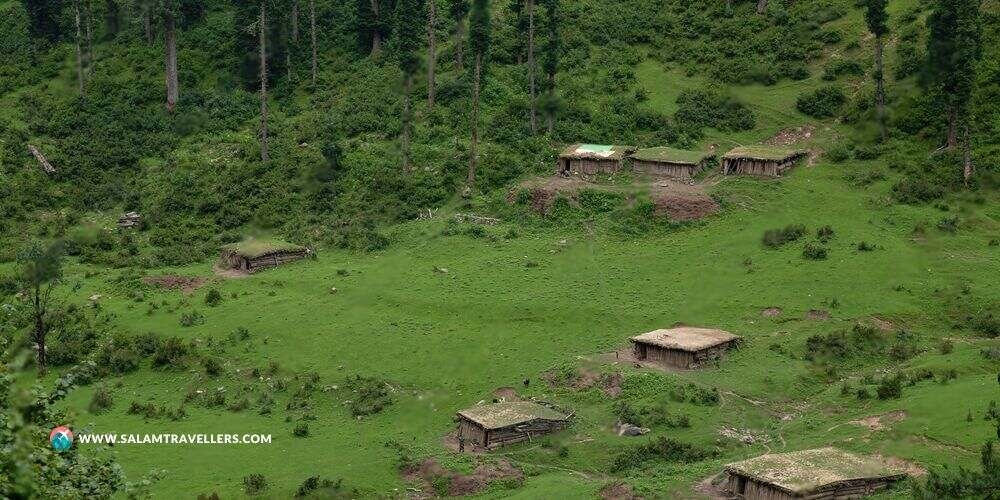
The nearest airport to the Brammah Valley Trek is Srinagar Airport located about 90 km away. From the airport, you can hire a taxi which will take around 2.5-3 hours to reach the starting point of the trek at Pulwama.
The closest rail route station is Jammu Tawi, which is very much associated with significant urban areas across India. From Jammu, you will need to take a taxi or bus to Srinagar, which is around 300 km away and takes 8-9 hours. From Srinagar, you can continue towards Pulwama by shared taxi or bus which takes around 3-4 hours.
Some of the connectivity options from Srinagar Airport/Jammu to Pulwama are:
- By taxi: Taxis are easily available from both Srinagar Airport and Jammu railway station to Pulwama. However, they are quite expensive. Shared taxis can help reduce costs.
- By bus: Both J&K SRTC and private buses ply regularly between Srinagar, Jammu, and Pulwama. These are economical options for budget travelers.
- By shared taxi: Shared taxis or vans are a good option to reach Pulwama from Srinagar or Jammu. They usually charge per seat and are quicker than buses.
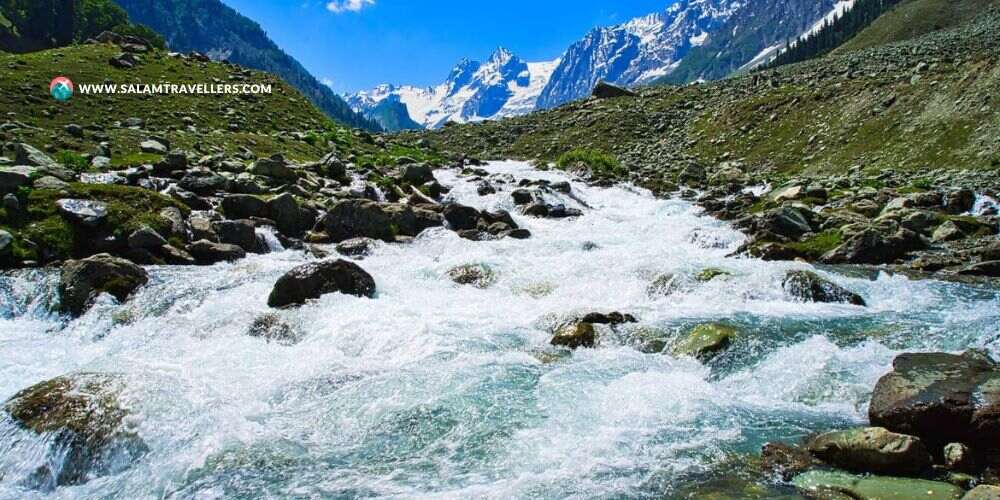
Once you reach Pulwama, the starting point of the Brammah Valley trek is just 14 km away. You can take a taxi or local bus to reach the base camp.
Also Read: 9 Best Adventure activities in Gulmarg
Do you need any Permits for the Valley?
To trek in the Brammah Valley, you need to obtain permits from the authorities. Permits are mandatory as the valley falls under protected areas.
The permits can be obtained from the Deputy Commissioner’s office in Kargil. You need to submit photocopies of identification documents, like an Aadhaar card, along with the permit application form. The permit fees are minimal, around INR 200 per person.
It takes around 1-2 working days to process the permits if you apply directly at the DC office. You can also apply through a trek operator, but they usually charge extra service fees.
The permit allows you to camp only at designated campsites in the valley. There are around 4-5 good campsites on the trek route. You must stick to the campsites mentioned in the permit to avoid trouble.
Also Read: What to Pack for the Kashmir Trip in October
Climbing Gear for Brammah Valley Trek
When packing for the Brammah Valley trek, focus on bringing lightweight and high-quality gear to keep your pack as light as possible. A few essentials to pack are as follows:
Equipment
- Backpack (40-60L) – Pack light but ensure it fits all your gear and has a sturdy, padded hip belt.
- Sleeping bag – Get one rated to -10°C or lower. Nights can get very cold.
- Trekking poles – Helpful for navigating steep ascents and descents. Consider adjustable poles.
- Headlamp – Essential for early morning starts and nighttime in camp. Bring extra batteries.
- Water bottles/bladder – At least 3L capacity. High altitudes make it very important to stay hydrated.
- Sun hat, sunglasses, sunscreen – Protect yourself from harsh UV rays.

Clothing
- Base layers – Merino wool or synthetic, avoid cotton. Bring 2-3 sets.
- Fleece jacket – Essential for warmth during cold evenings and mornings.
- Waterproof jacket and pants – Quality rain gear to shield from sudden mountain storms.
- Down jacket – Packable and warm. Vital for frigid nights and mornings.
- Hiking pants – Lightweight, quick-dry, and durable. Avoid jeans.
- Socks – Wool hiking socks. Bring 3-4 pairs.
Footwear
- Hiking boots – Waterproof with good ankle support. Break them in before the trek.
- Camp shoes – Lightweight flip flops or slip-ons for around camp.
Health and Safety
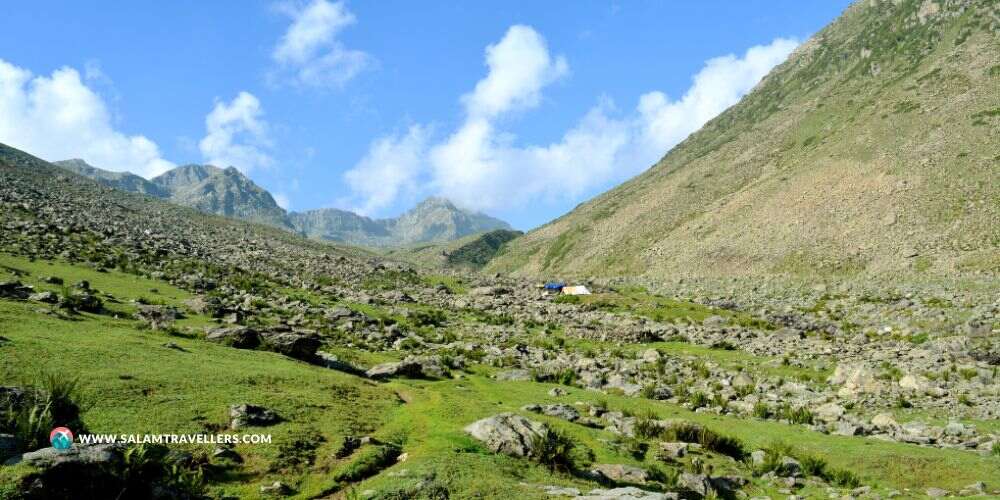
The Brammah Valley trek takes place at high altitudes, so altitude sickness is a major health concern. Altitude sickness, also called acute mountain sickness (AMS), can occur when you ascend too quickly without giving your body time to adjust to the lower oxygen levels. Symptoms include headache, nausea, vomiting, dizziness, fatigue, and trouble sleeping. The best way to prevent AMS is to ascend slowly, avoid overexertion, stay hydrated, and avoid alcohol. If symptoms persist or worsen, the only treatment is to descend to a lower altitude.
There are no medical facilities along the Brammah Valley trek route, so trekkers need to carry a first aid kit and be prepared to handle any minor injuries or illnesses. In case of a serious emergency, you may need to be evacuated by helicopter or return to the trailhead. Having emergency communication devices like a satellite phone is highly recommended since mobile phone coverage is unreliable in the mountains.
Also Read: Is it a safe Kashmir trip with 2-year kids in winter
Expected Expenditure for the Adventure
The Brammah Valley Trek can be done on a moderate budget. Here is a breakdown of the regular expenses included:
- Permits – You need to obtain permits for trekking in the area from the Deputy Commissioner’s office in Kargil. This costs around INR 200 per person.
- Local Guide – It’s recommended to hire a local guide for the trek. They usually charge INR 1500-2000 per day. For a 5-day trek, the guide fee would be around INR 7500-10000.
- Food – Most of your meals during the trek will be provided by your guide. You’ll have to pay for these which costs around INR 300 per person per day. So food for 5 days will be around INR 1500 per person.
- Accommodation – There are no accommodation options during the trek. You’ll be camping in tents each night. No extra costs for this.
- Transport – You’ll need to arrange transport to/from Kargil which is the starting point. Shared taxis from Srinagar cost around INR 500-800 one way per person.
- Gear Rentals – You can rent trekking gear like tents and sleeping bags in Kargil if needed. Budget around INR 300-500 per person for gear rentals.
In total, the cost per person for the Brammah Valley trek would be around INR 10,000 – 12,000 excluding the transport costs to reach Kargil. With transport, the total budget would be approximately INR 15,000 per person.
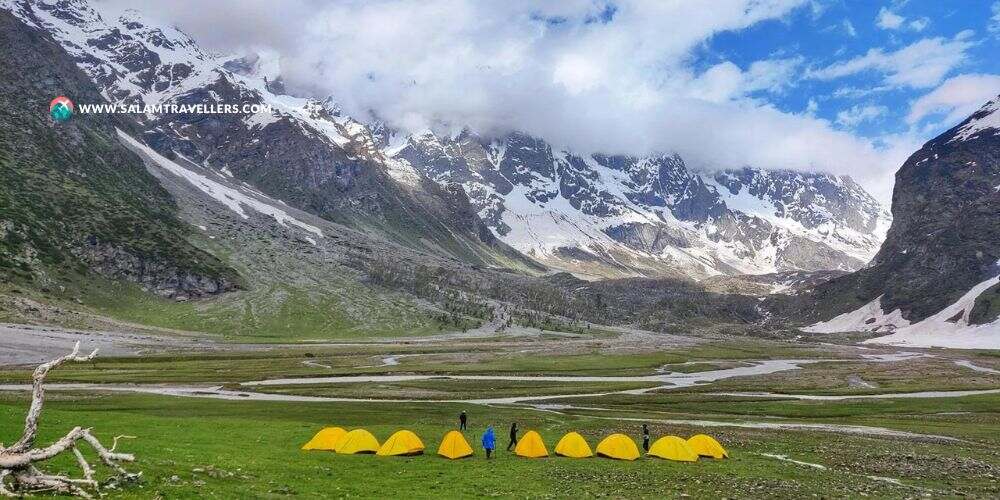
Pack your bags!
The Brammah Valley Trek offers a captivating journey through the stunning landscapes of the Pir Panjal range in Kashmir, India. With its varied terrain, including pine forests, alpine meadows, and glaciers, this trek provides a perfect blend of adventure and natural beauty.
Whether you choose to set forth on this trek in the vibrant spring months or the crisp autumn days, the Brammah Valley Trek promises unforgettable experiences and panoramic vistas. Prepare to immerse yourself in the serenity of the valley, encountering the soul-stirring beauty of the mountains and lakes along the way.
This trek is a testament to the allure of nature and the thrill of exploration, making it an adventure of a lifetime for every trekking enthusiast.
Stay tuned for more adventure guides from Salam Travellers.

